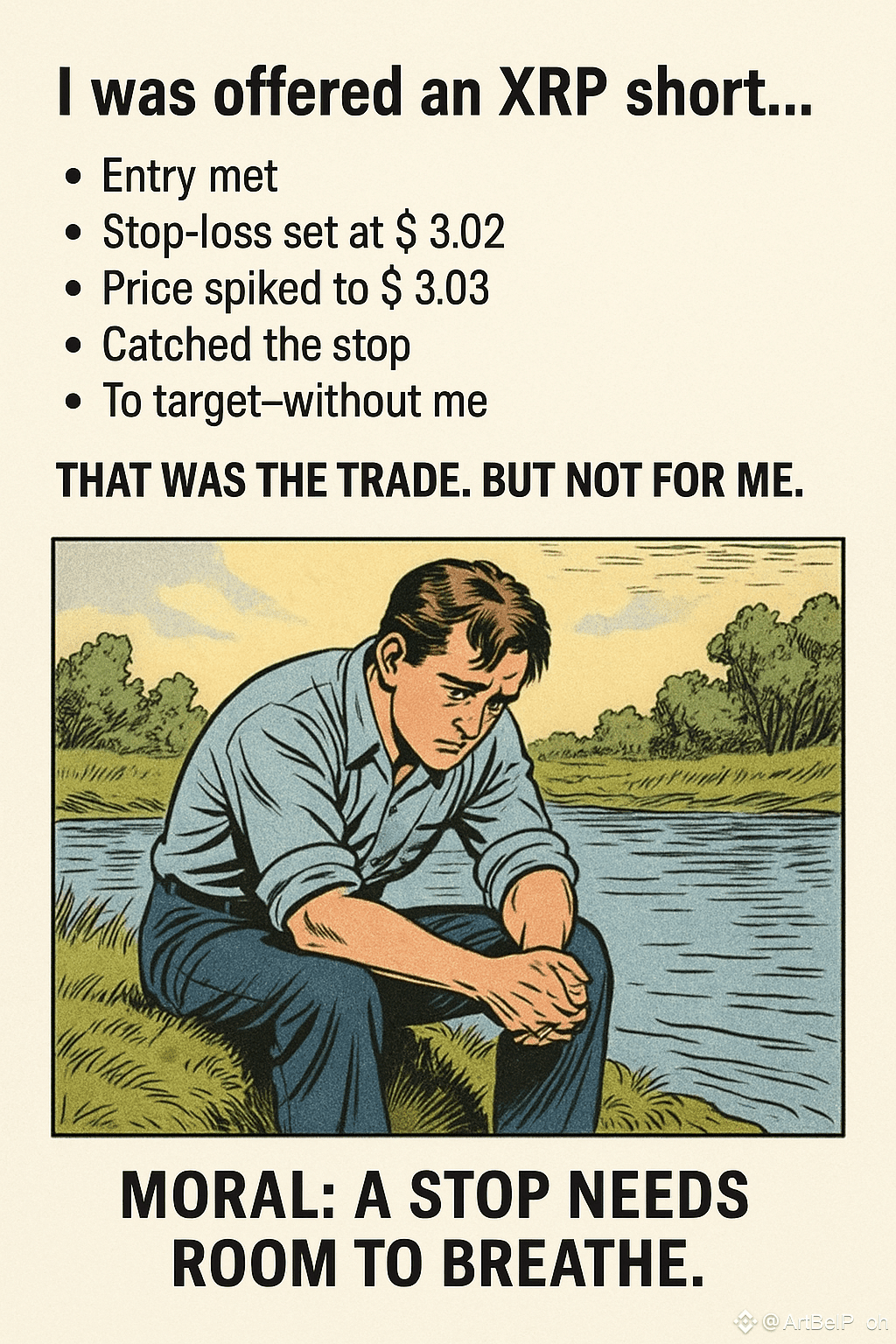I still remember this one clearly.
I was offered a trade — a short on $XRP .
Everything made sense: the technical setup looked solid, confirmations were there, and I even checked the charts on multiple timeframes. It felt like the right move.
I entered the position.
Placed my stop-loss at 3.02 — just slightly above the local high.
It seemed safe. I told myself, “If the price goes there, I was wrong anyway. That’s fine.”
Minutes later, the candle jumped. At first, I didn’t panic — volatility is part of the game.
But then came a sharp spike. Price shot up to 3.03. Exactly one cent above my stop. I got stopped out.
I sat there, staring at the screen.
Watched the price pause for a second…
And then — it reversed.
Slowly, steadily — it moved down.
To the #target.
To the #profit.
To #success.
Without me.
The trade idea was absolutely correct.
I read the market right.
I timed the entry well.
But I failed on the most painful part — the stop-loss.
What I Learned About Stop-Losses
Through this one trade, I learned something simple but powerful:
A stop-loss is not just where you cut your loss.
It’s a reflection of your trust in the trade — and your understanding of market behavior.
Here’s why that matters:
1. Don’t place stops too tight
Price action often includes fakeouts, wicks, and liquidity grabs.
If you place your stop just above the candle high — like I did — you become part of the easy money for the market.
2. Respect volatility
If the asset moves 3–4 cents in a minute, a 1 cent stop is not a stop — it's a trap.
It’s better to reduce position size and give your trade more room than to die by a perfect entry and a shallow stop.
3. Understand market structure
Don’t place stops where it’s “convenient”.
Place them where a break would truly invalidate your idea.
Not just where it feels safe on the chart.
4. Risk comes first
Every trade must start with this question:
Where will I exit if I’m wrong?
Only then ask: where is my profit target?
How Not to Repeat My Mistake
Think in terms of a stop zone, not just a number.
Use ATR (Average True Range) to size your stop properly.
Don’t fear wider stops if the analysis is strong.
Cut your position size to manage risk — it's a smart trade-off.
And most importantly — don’t aim to be perfect.
Aim to be effective.
I don’t regret the money I lost.
I regret missing a winning trade…
because I wanted my stop to look clean instead of smart.
That’s a lesson I paid for — and now you get it for free.


